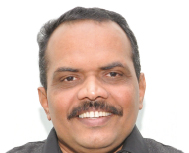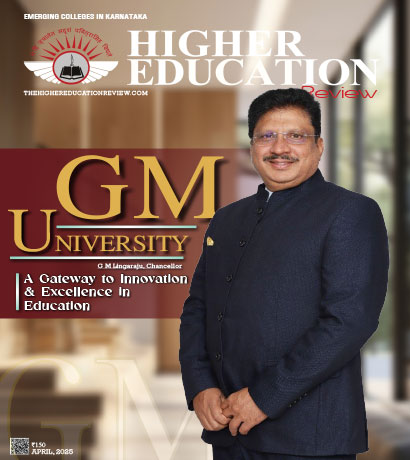Research Conundrums: Will It Melt Down?

Dr. K.S.Chandrasekar, Professor and Head - Institute of Management, University of Kerala
The Indian Higher Education scenario has changed over the years. From public funded universities now we are witnessing private and public-private universities. Soon we shall have online and virtual universities in our country. When the new Central government took charge, the existing Universities were churning out a large number of PhD holders and there was no cap on the number of research scholars under a research supervisor. It was found that at a time one research supervisor not only enrols as a guide in his parent university but also in other universities on the invitation. This has happened primarily because of the advent of deemed universities and also universities which were formed by the State government Acts. Most of such universities are new to this area and hence had no PhD's on roll. This lead to getting the Professors from other state-funded universities as research guides. There was no cap on the number of research scholars under such a guide. If we look at the following table, it is clear why research has become the mantra of the day.
It can be inferred from the table that only deemed universities have shown the growth and are the only institutions which have accepted the increasing number of higher education aspirants as the government owned institutions have stagnated strength. It can be seen that 30 percent of the total universities in India are deemed universities. The central government decided over the years to reduce the government involvement in setting up universities. The so-called World class universities proposed by the UPA government are a non-starter. I think this concept is more or less buried.
There are a need and concerted discussion on the quality and quantity of research degrees offered by various universities.
According to the study conducted by FICCI, 45 percent of the positions for professors, 51 percent positions for readers, and 53 percent positions for lecturers were vacant in Indian universities in 2007-08 which went upward spiral and most of the Indian public universities are not in a position to complete the recruitment process owing to legal issues. The number of PhDs awarded in India has doubled over a 10- year period from 1998 to 2007, growing at an annual rate of about 9 percent during the period, whereas the number of PhDs awarded in China grew at a rate of over 18 percent during the same period (MHRD, CII & Deloitte, 2013). Some of the universities in certain regions where the growth of deemed universities became phenomenal have understood that it is research which will contribute more to their revenue than the graduate admissions. This paved way for the increased intake in research admissions which then drew the flak from the UGC. Some of the universities took it very lightly that they allowed anyone who is working in any college with a PhD is eligible to guide students. Dravidian University at Kuppam under the Andhra Pradesh government violated norms and admitted 8029 candidates for the award of PhD in two years between 2007-09. This forced the government to order enquiry. Such is the blatant violation of norms in research that the UGC brought out the new norms. Only the full-time faculty of a university be a research guide.
However, no person who is retired will become eligible to guide candidates. This suddenly has put the brakes on many state-owned universities since most of the retired teachers were guiding the candidates. There is a reason to it since the number of faculty in these institutions is in single digit which forces them to rely on the retired hands.
All this points to one direction: There are a need and concerted discussion on the quality and quantity of research degrees offered by various universities. UGC may have to look into each university as the case may be considering that state-funded universities will require a different platform for the research awards as compared to privately owned universities. The new regulations including categorising the universities into three are not in an objective manner. One should understand that the requirements of North Eastern Hill University in Eastern India and Kerala Kalamandalam University in Kerala vary heavily. It would be appropriate if UGC is able to identify task forces on Research for each state and understands the characteristics and process involved in each state separately. This report, in turn, could be collated at the central level and an appropriate decision taken for the benefit of the research scholars across the country. There is a need for Research Director at the UGC who can oversee the R&D developments in all the fields and ensure that we are in the top R&D destinations in the World.
Dr. K. S. Chandrasekar
Dr. K.S. Chandrasekar completed his Ph.D. in Management in Alagappa University. He published a research paper on, "Bubble management using 4Q approach: Model for performance budgeting" coauthored with Dr M Senthil of Alagappa University. He is currently the Professor and Head, Institute of Management in Kerala, University of Kerala.
It can be inferred from the table that only deemed universities have shown the growth and are the only institutions which have accepted the increasing number of higher education aspirants as the government owned institutions have stagnated strength. It can be seen that 30 percent of the total universities in India are deemed universities. The central government decided over the years to reduce the government involvement in setting up universities. The so-called World class universities proposed by the UPA government are a non-starter. I think this concept is more or less buried.
There are a need and concerted discussion on the quality and quantity of research degrees offered by various universities.
According to the study conducted by FICCI, 45 percent of the positions for professors, 51 percent positions for readers, and 53 percent positions for lecturers were vacant in Indian universities in 2007-08 which went upward spiral and most of the Indian public universities are not in a position to complete the recruitment process owing to legal issues. The number of PhDs awarded in India has doubled over a 10- year period from 1998 to 2007, growing at an annual rate of about 9 percent during the period, whereas the number of PhDs awarded in China grew at a rate of over 18 percent during the same period (MHRD, CII & Deloitte, 2013). Some of the universities in certain regions where the growth of deemed universities became phenomenal have understood that it is research which will contribute more to their revenue than the graduate admissions. This paved way for the increased intake in research admissions which then drew the flak from the UGC. Some of the universities took it very lightly that they allowed anyone who is working in any college with a PhD is eligible to guide students. Dravidian University at Kuppam under the Andhra Pradesh government violated norms and admitted 8029 candidates for the award of PhD in two years between 2007-09. This forced the government to order enquiry. Such is the blatant violation of norms in research that the UGC brought out the new norms. Only the full-time faculty of a university be a research guide.
However, no person who is retired will become eligible to guide candidates. This suddenly has put the brakes on many state-owned universities since most of the retired teachers were guiding the candidates. There is a reason to it since the number of faculty in these institutions is in single digit which forces them to rely on the retired hands.
All this points to one direction: There are a need and concerted discussion on the quality and quantity of research degrees offered by various universities. UGC may have to look into each university as the case may be considering that state-funded universities will require a different platform for the research awards as compared to privately owned universities. The new regulations including categorising the universities into three are not in an objective manner. One should understand that the requirements of North Eastern Hill University in Eastern India and Kerala Kalamandalam University in Kerala vary heavily. It would be appropriate if UGC is able to identify task forces on Research for each state and understands the characteristics and process involved in each state separately. This report, in turn, could be collated at the central level and an appropriate decision taken for the benefit of the research scholars across the country. There is a need for Research Director at the UGC who can oversee the R&D developments in all the fields and ensure that we are in the top R&D destinations in the World.
Dr. K. S. Chandrasekar
Dr. K.S. Chandrasekar completed his Ph.D. in Management in Alagappa University. He published a research paper on, "Bubble management using 4Q approach: Model for performance budgeting" coauthored with Dr M Senthil of Alagappa University. He is currently the Professor and Head, Institute of Management in Kerala, University of Kerala.

